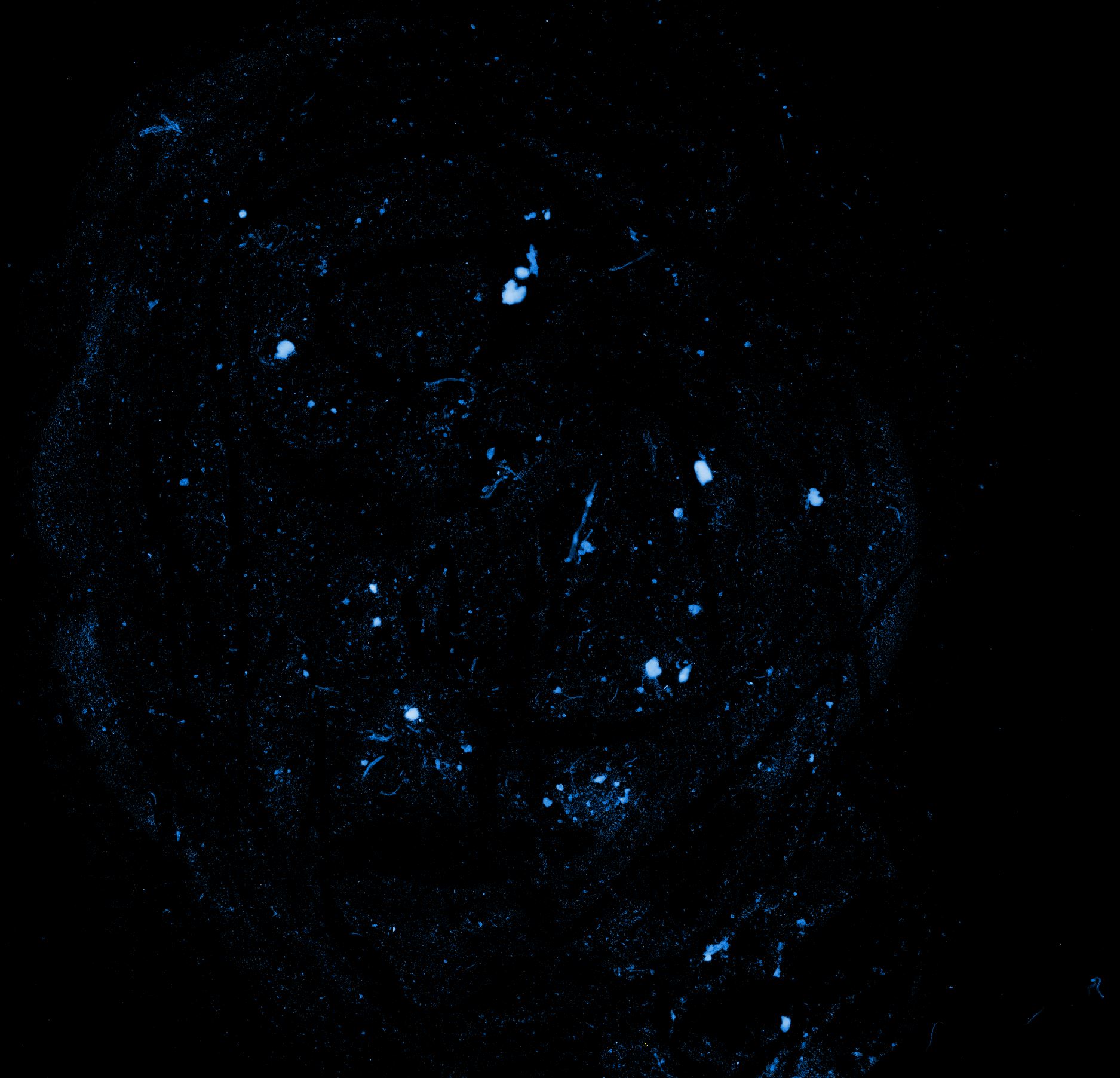Sampling took place monthly at nine wastewater treatment plants using different methods of biosolids treatment in Scotland and Wales. These were:
- Two conventional anaerobic digestion treatment plants (conventional treatment)
- Three advanced anaerobic digestion plants (enhanced treatment)
- Two lime-stabilised plants (enhanced treatment)
- Two thermal drying plants (enhanced treatment)
At each site, samples were taken of raw sludge and treated biosolids. Microplastics in water and biosolid samples were characterised by Laser Direct Infrared (LDIR) Imaging. This method enables microplastic particles down to 10 µm in size to be quantified in terms of both physical shape and chemical composition, and represents the state-of-the-art technique for the rapid detection of microplastics in environmental matrices.

Image from LDIR slide showing plastics particles (blue) against the soil matrix
In the case of viruses, we focused on viral indicators of known significance to the health protection agencies and the shellfish industry and also those which can be used by regulatory authorities for the routine monitoring of water quality, as follows:
- CrAssphage (CrASS) – a highly abundant virus of gut bacteria (DNA based)
- Human Adenovirus type 40/41 (HAdV) – cause of gastroenteritis (DNA based)
- Pepper Mild Mottle Virus (PMMoV) – abundant virus of bell peppers (RNA based)
- Aichi Virus (AIV) – cause of gastroenteritis (RNA based)
As well as virus and microplastic content, we also recorded presence of antimicrobial resistance genes.